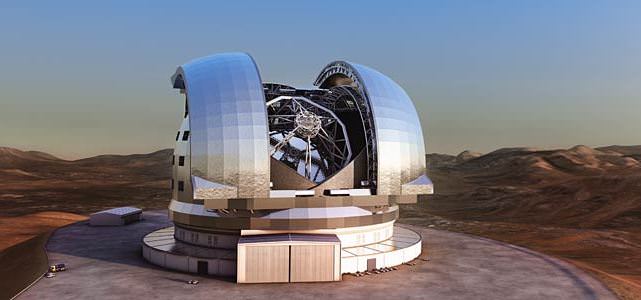Can a kilometer-scale telescope help conduct more efficient science, and specifically for the field of optical interferometry? This is what a recently submitted study hopes to address as a pair of researchers propose the Big Fringe Telescope (BFT), which is slated to comprise 16 telescopes 0.5-meter in diameter and will be equivalent to a telescope at 2.2 kilometers in diameter. What makes BFT unique is its potential to create real-time exoplanet “movies” like the movies featuring Venus transiting our Sun, along with significantly reduced construction costs compared to current ground-based optical interferometers.
Continue reading “The Big Fringe Telescope. A 2.2 KILOMETER Telescope on the Cheap. And it Can Make Exoplanet “Movies”.”Air Showers Ruin Astrophotos, but They Could be a New Method for Studying the Universe

Cosmic rays are a fascinating and potentially hazardous phenomenon. These high-energy particles typically consist of protons that have been stripped of their electrons and accelerated to nearly the speed of light. When these rays collide with Earth’s atmosphere, an enormous amount of secondary particles known as an “air shower” results. Ordinarily, these showers are a source of frustration for astronomers since they leave “tracks” on telescope images that obscure the celestial objects (asteroids, stars, galaxies, exoplanets, etc.) being observed.
However, a research team from the National Astronomical Observatory of Japan (NAOJ) and Osaka Metropolitan University has found a new application for these energetic particles. Using a novel method, they could observe these extensive cosmic-ray air showers with unprecedented precision. The key to their method is the Subaru Prime Focus Camera (Suprime-Cam) mounted on the Subaru Telescope atop the Mauna Kea volcano in Hawaii. This method and the team’s findings could provide a new method for studying the Universe’s most energetic particles.
Continue reading “Air Showers Ruin Astrophotos, but They Could be a New Method for Studying the Universe”Coming Soon: World’s Largest Optical Telescope
[/caption]
The world’s largest optical/infrared telescope has been given the initial go-ahead to be built. Called the European Extremely Large Telescope (E-ELT) this long-proposed new ground-based telescope will have a 40-meter main mirror and observe the universe in visible and infrared light, making direct images of exoplanets, perhaps find Earth-sized and even Earth-like worlds, and study the first galaxies that formed after the Big Bang.
“This is an excellent outcome and a great day for ESO. We can now move forward on schedule with this giant project,” said the ESO Director General, Tim de Zeeuw.
At a meeting in Garching, France this week, the ESO (European Southern Observatory) Council approved the E-ELT program, with 6 out of 10 countries giving firm approval and four gave “ad referendum” approval, meaning that they needed an official green light from their governments. With that approval, officials are hopeful the E-ELT could start operations by the early 2020’s.
The new super-large eye on the sky will be built at Cerro Armazones in northern Chile, close to ESO’s Paranal Observatory.
The cost is expected to be $1.35 billion USD (1.083-billion-euro)
“World-leading projects of this kind inspire us all and are hugely effective in bringing young people into careers in science and technology,” said David Southwood, president of the Royal Astronomical Society.
This type of telescope has been on the priority list for astronomy by scientists around the world.
The E-ELT will gather 100 million times more light than the human eye, eight million times more than Galileo’s telescope which saw the four biggest moons of Jupiter four centuries ago, and 26 times more than a single VLT telescope.
“The E-ELT will tackle the biggest scientific challenges of our time, and aim for a number of notable firsts, including tracking down Earth-like planets around other stars in the ‘habitable zones’ where life could exist — one of the Holy Grails of modern observational astronomy,” the ESO said.
ESO said that early contracts for the project have already been placed. Shortly before the Council meeting, a contract was signed to begin a detailed design study for the very challenging M4 adaptive mirror of the telescope. This is one of the longest lead-time items in the whole E-ELT program, and an early start was essential.
Detailed design work for the route of the road to the summit of Cerro Armazones, where the E-ELT will be sited, is also in progress and some of the civil works are expected to begin this year. These include preparation of the access road to the summit of Cerro Armazones as well as the leveling of the summit itself.
Source: ESO


